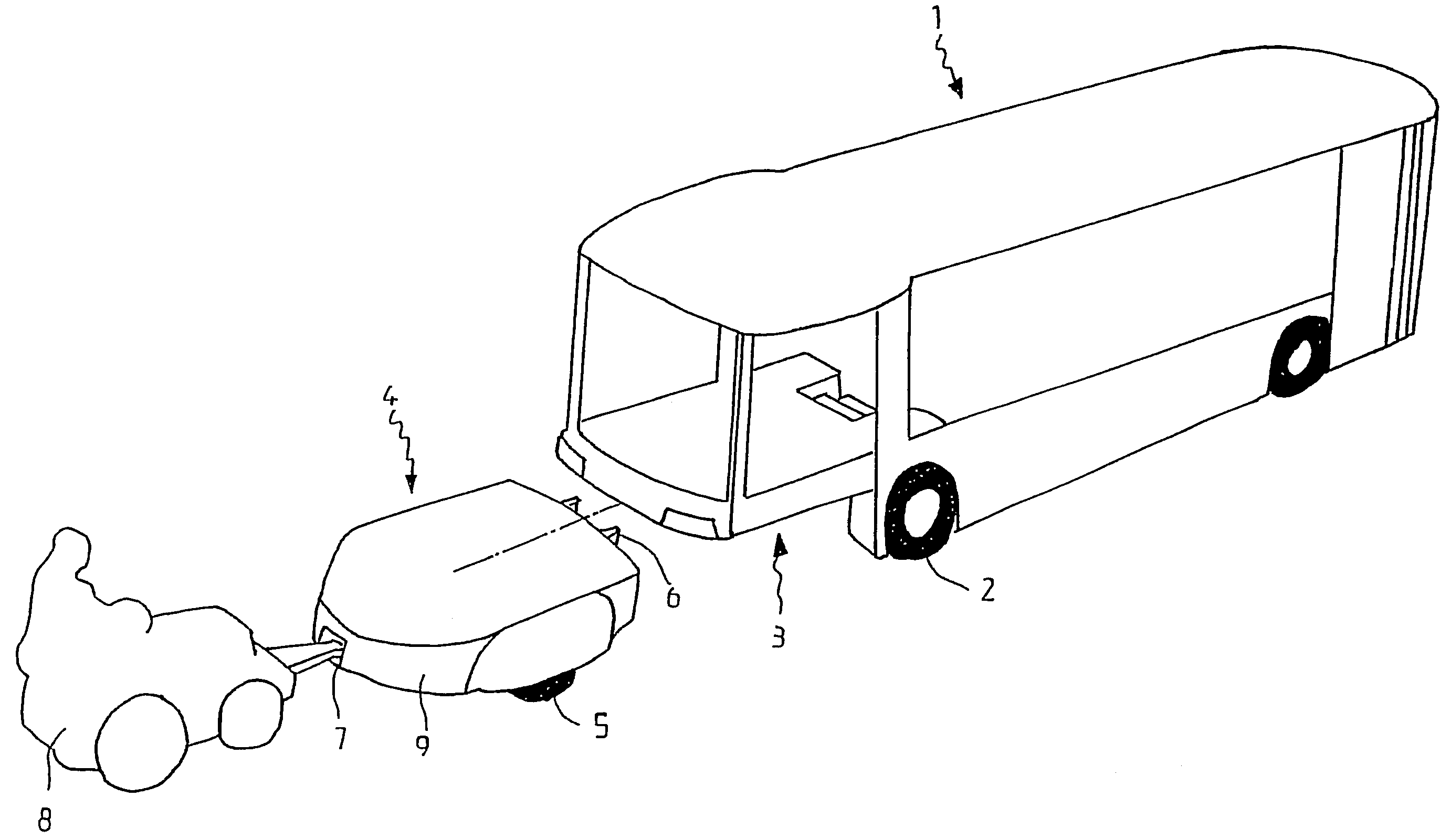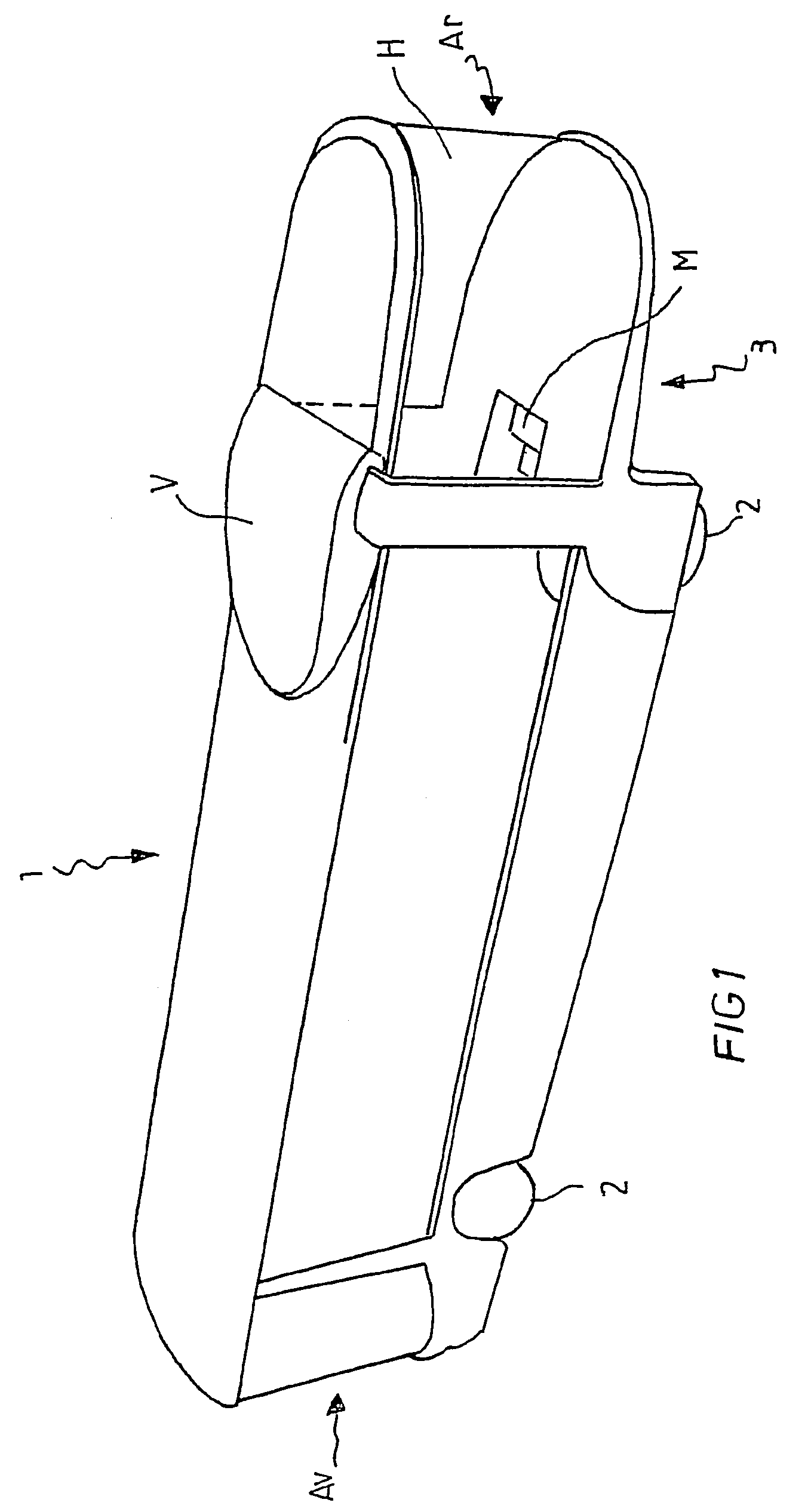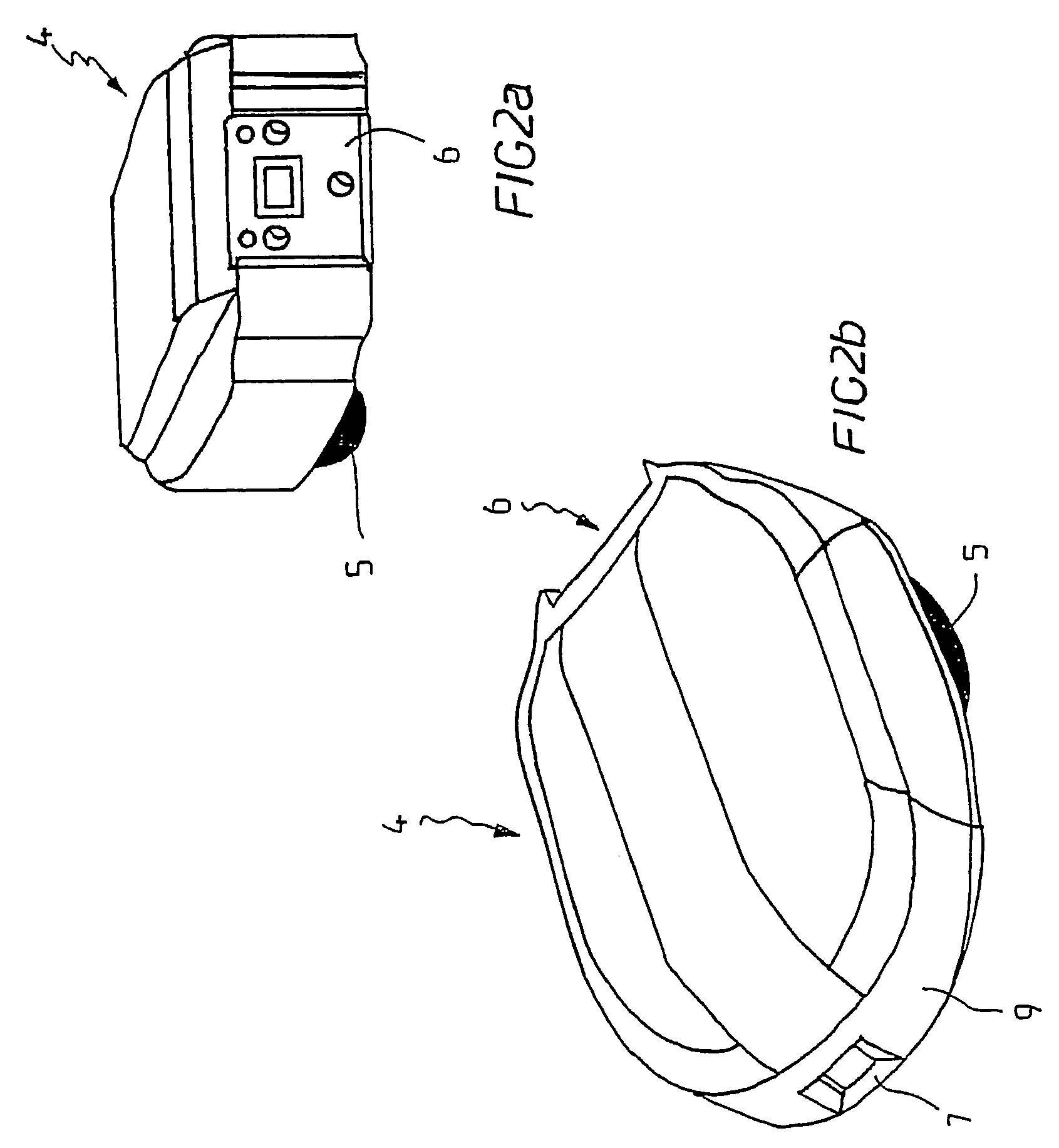Electrically-powered autonomous vehicle
an electric-powered, autonomous vehicle technology, applied in the direction of vehicles, applications, propulsion by batteries/cells, etc., can solve the problems of large technological variation, rapid overtake, and inability to design autonomous vehicles with a large payload capability, etc., to achieve the effect of extending the range of the vehicl
- Summary
- Abstract
- Description
- Claims
- Application Information
AI Technical Summary
Benefits of technology
Problems solved by technology
Method used
Image
Examples
Embodiment Construction
[0054]FIG. 1 depicts an electrically powered autonomous vehicle 1 comprising a chassis equipped with two axles each fitted with one pair of wheels 2, and the front of which is denoted by Av and the rear by Ar. The vehicle chassis defines, at the rear, a housing 3 situated under a raised cabin part H and designed to accommodate a battery chassis.
[0055]The vehicle motor is situated between the wheels of the vehicle (under the steps M of the stairs in the embodiment depicted) or, better still, in the wheels themselves (electric motorized wheels are known in the art and there is no need to describe these here). The volume V available on the roof may be used to house cooling devices, on-board computer equipment and / or an additional reserve of power. It is also possible for equipment specific to the use, for example air-conditioning means, alcohol-fired, gas-fired or fuel-fired heating means (in the current state of the art, electric vehicles are not generally electrically heated because ...
PUM
| Property | Measurement | Unit |
|---|---|---|
| volume | aaaaa | aaaaa |
| diameter | aaaaa | aaaaa |
| diameter | aaaaa | aaaaa |
Abstract
Description
Claims
Application Information
 Login to View More
Login to View More - R&D
- Intellectual Property
- Life Sciences
- Materials
- Tech Scout
- Unparalleled Data Quality
- Higher Quality Content
- 60% Fewer Hallucinations
Browse by: Latest US Patents, China's latest patents, Technical Efficacy Thesaurus, Application Domain, Technology Topic, Popular Technical Reports.
© 2025 PatSnap. All rights reserved.Legal|Privacy policy|Modern Slavery Act Transparency Statement|Sitemap|About US| Contact US: help@patsnap.com



